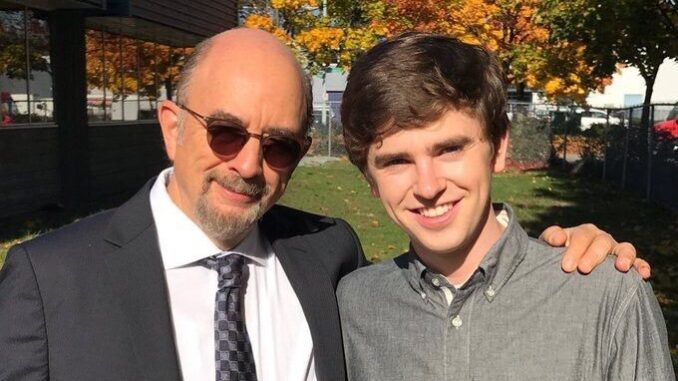
After seven seasons of saving lives, breaking hearts, and redefining what empathy looks like on screen, The Good Doctor took its final bow in May 2024. But its legacy—much like its protagonist—refuses to fade quietly.
From the very beginning, the show was a risk. A primetime drama centered on an autistic surgeon was almost unheard of in network television. Yet, Freddie Highmore’s portrayal of Dr. Shaun Murphy transformed that risk into revelation. Shaun was brilliant but vulnerable, calculating yet tender, a man whose greatest challenge wasn’t mastering surgery but understanding the world around him. Through his eyes, millions of viewers learned to see difference not as defect, but as another form of intelligence.
The finale, much like Shaun himself, was quiet and deliberate. No last-minute twist, no melodramatic exit. Instead, we saw him years later—older, steadier, running a neurodiversity clinic, teaching young doctors, and raising a family with Lea. It was a conclusion that resisted television’s obsession with spectacle and chose something rarer: peace.
“If even one person sees autism differently because of this show, then we’ve done our job,” Freddie Highmore said in an interview with Entertainment Tonight. That single sentence perhaps captures the heartbeat of The Good Doctor better than any review could. It wasn’t a series about surgery—it was about sight. About seeing people fully, compassionately, and without filter.
When The Good Doctor first aired in 2017, it immediately stood apart from the medical drama pack. Where other shows leaned on adrenaline and scandal, this one dared to slow down. It asked viewers to sit in silence, to observe awkward pauses, to witness a mind that processed empathy through logic. It redefined what a hero could look like—not the loudest, not the most charismatic, but the most human.
Over the years, the show sparked something beyond ratings. Schools used it as an entry point to discuss autism. Hospitals referenced it in empathy training. Parents who once struggled to explain neurodiversity to their children found language through Shaun’s story. It wasn’t perfect representation, but it was visible, and visibility—especially on a stage as bright as ABC’s—is no small victory.
Of course, The Good Doctor was not without criticism. Some accused it of leaning too heavily on the “autistic savant” trope, portraying Shaun as almost superhuman. Others questioned why a show about an autistic character didn’t feature autistic actors in major roles. These critiques are valid—and necessary. But what made the show matter wasn’t its perfection. It was its intent. It was television daring to be imperfect for the right reasons.
Despite its flaws, The Good Doctor accomplished something extraordinary: it made empathy mainstream. It treated difference not as an obstacle to overcome, but as a lens through which the world could be understood. Shaun’s character didn’t inspire pity; he inspired reflection. He forced audiences to reconsider what competence, compassion, and connection truly mean.
When the final credits rolled, social media became a sea of gratitude. Fans from around the world shared what the series meant to them—how it helped them navigate friendships, workplaces, and even parenthood. Hashtags like #ThankYouShaun and #TheGoodDoctorLegacy flooded timelines with personal stories. One viewer wrote, “I started watching because I love medical dramas. I finished because it taught me how to be kinder.” In the end, that’s the real operation The Good Doctor performed—not on bodies, but on hearts. It stitched understanding where ignorance once lived. It replaced pity with respect. And it left a scar shaped like empathy.
The show’s conclusion doesn’t mark an ending so much as a handoff. Its success proves that audiences are ready for more neurodivergent stories, told with authenticity and care. The next step belongs to writers and directors who will dare to go further—to cast neurodivergent actors, to hire neurodivergent creators, to explore characters whose differences are simply part of their humanity, not the sum of it.
Because if The Good Doctor taught us anything, it’s that healing is not always about curing. Sometimes it’s about understanding. Sometimes it’s about listening. And sometimes it’s about believing that being different isn’t the opposite of being capable—it’s another way of being extraordinary. As the lights dim on St. Bonaventure Hospital and the familiar hum of the OR fades to silence, one thing remains: The Good Doctor didn’t just tell us what it means to save a life. It reminded us, again and again, what it means to care.
